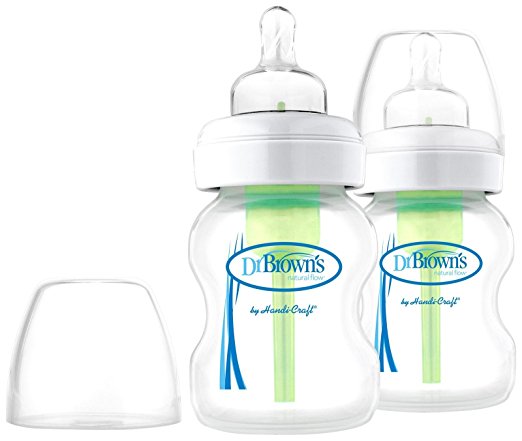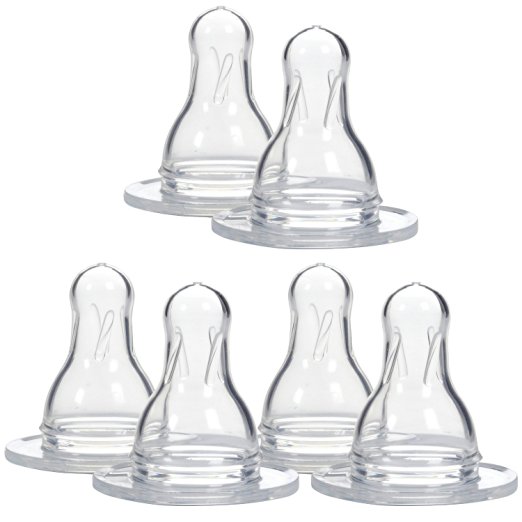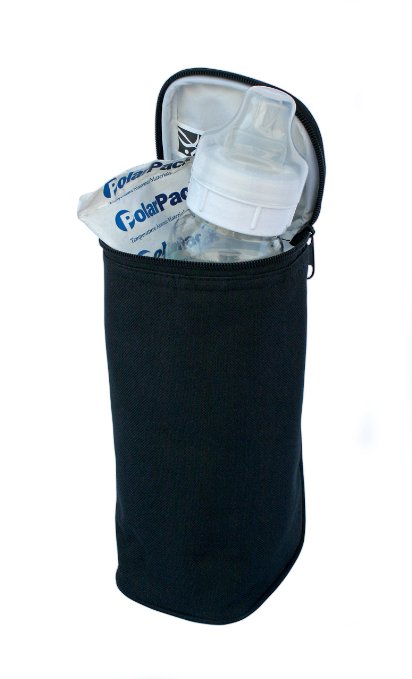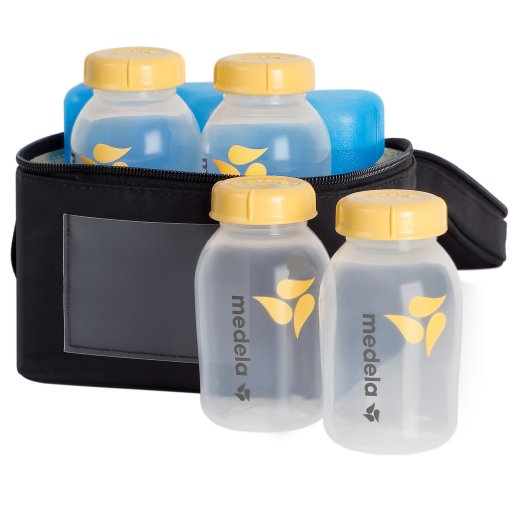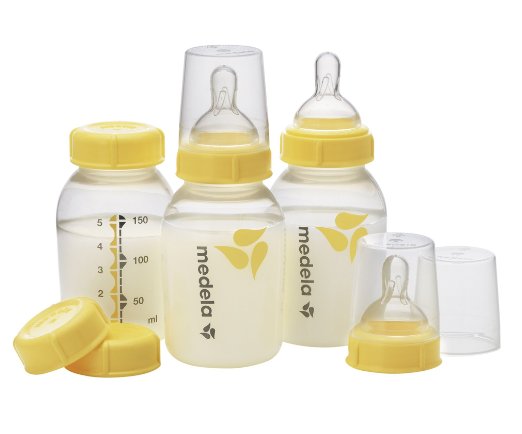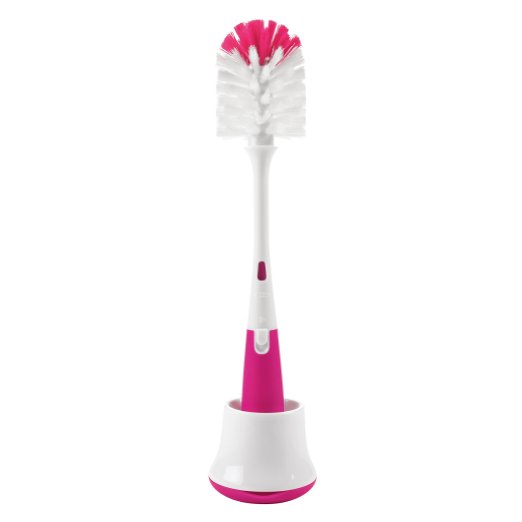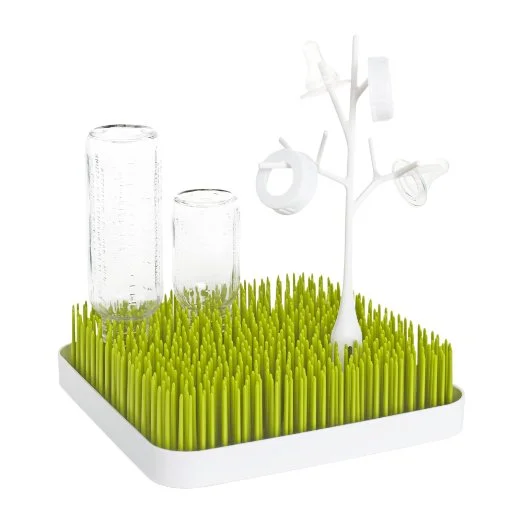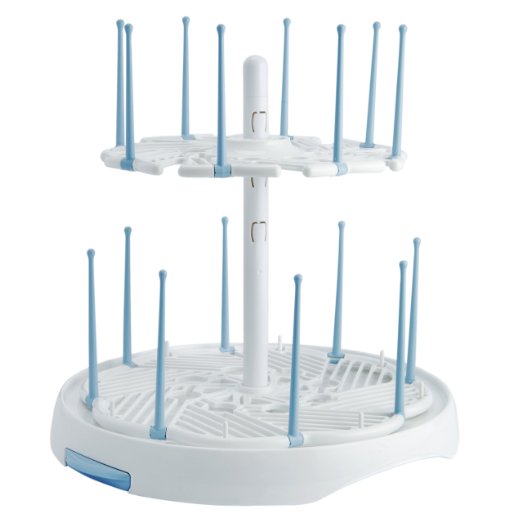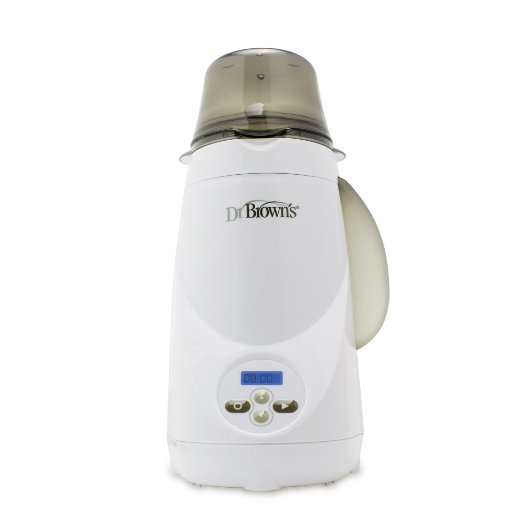bottles
Bottles: We used and loved Dr. Brown's Glass Bottles because they have a special internal insert that help with air flow to prevent babies from gulping air and getting gas (gas can be very painful and lead to a cranky baby.) I am more comfortable heating glass than plastic (you can read more on the topic here), so used their glass bottles. We originally had the "standard" bottle model, which is still available in plastic, but the glass version was discontinued. The glass bottle Dr. Brown's makes now is their "Options" bottle, which has a wider neck and the option to use with or without the insert. The options bottle comes in plastic as well. We also liked the plastic Advent Bottles and used those when the baby could start to hold his own bottle (since at that point he was better at drinking without gulping air and the risk of him throwing/dropping the glass bottles made plastic a more reasonable, safer choice). For babies who struggle to take bottles, lots of moms rave about Comotomo, which is shaped to more closely mimic nursing. As for size and capacity, there is some debate. Most breastfeeding people will tell you a breastfed baby never needs more than 4 ounces at a time and they don't understand why larger (8 ounce, 9 ounce, etc.) bottles are even made. We were happy with the 4 ounce size, but sometimes we would give bottles as big as 5 ounces (this can be accommodated in the 4 ounce bottles). We only ever used 4 ouncers, but I know many people who ended up wanting/needing larger bottles.
Nipples: A piece of advice I received and followed was to only use the newborn / level 1 nipples if you are breastfeeding. The smaller nipples create a slower flow, similar to breastfeeding. The concern is that if you let the baby use a faster flow nipple, they'll get fed up with the slow pace of breastfeeding and only want to have bottles because they get their food much faster. Some people even recommend using the preemie flow size to keep things very, very slow. This can also help if you have a baby who gobbles milk and spits up, since slower eating generally reduces spit-up.
Insulation/On-the-go Storage: If you are nursing and will be giving bottles of breast milk on-the-go, you'll want an insulated bottle bag to keep milk fresh and temperature controlled. (This differs from formula because with formula you can have room temperature or thermos-warmed distilled water on hand and mix it with the formula to make a bottle when the baby is ready to eat). A simple insulated bag like this would work fine, and just be sure the insulated bag you choose can accommodate the size/shape of your bottles. We were happy with a single capacity bottle bag, but there are also larger ones, like this double bottle bag by Skip Hop. I also like the Le Sportsac Bottle Bag, which is an open, flexible shape that could easily be repurposed as a lunch or snack bag for a toddler. Babies eat every 3-4 hours, so a lot of it depends on how long you plan to have your baby out and about without access to a fridge/bottle warmer and without nursing. A mom needs to be nursing/pumping at the same interval as the baby to keep supply and demand in balance, so unless the baby is going to be out of the house and away from his/her mom for an extended period, there isn't much need for multiple on-the-go bottles. For me this issue really only came up when I returned to work -- while I was on maternity leave the baby was only very rarely out of the house without me.
If you do full-time childcare outside the home while your baby is still nursing, you'll also want a cooler that can accommodate 3-4 bottles' worth of milk. I used a Medela pump so it was easy to get accessories for storage, but if you go with another pump brand, I recommend checking out that manufacturer's products. I liked the Medela breast milk cooler set, which is an inconspicuous black, has a spot to slip in a name tag, and can accommodate up to 4 bottles with an ice pack. My recommendation would be to have a cooler like this and then send the clean bottles separately for the daycare to heat up for you. You can also get nipple attachments for the Medela breast milk storage bottles that turn the storage bottles into feeding bottles, though I preferred to transfer the milk from the plastic Medela bottle and heat in a glass bottle.
Cleaning: Regardless of your choice of bottle, get both a bottle brush and a drying rack. We used the OXO Tot Brush and the Boon Drying Rack and have found them both to be great.
Bottle Warmer: For heating bottles, we used a Dr. Brown's bottle warmer that can accommodate pretty much any bottle size from any brand. I liked it and found it really easy to use. There is also this low-tech and totally effective version of bottle heating: hold the bottle under warm running water. Another use for the bottle warmer is to defrost homemade baby food purees (we'd freeze them in ice-cube-sized quantities).
